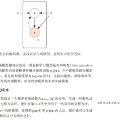Removing background noise from speech audio has been the subject of considerable research and effort, especially in recent years due to the rise of virtual communication and amateur sound recording. Yet background noise is not the only unpleasant disturbance that can prevent intelligibility: reverb, clipping, codec artifacts, problematic equalization, limited bandwidth, or inconsistent loudness are equally disturbing and ubiquitous. In this work, we propose to consider the task of speech enhancement as a holistic endeavor, and present a universal speech enhancement system that tackles 55 different distortions at the same time. Our approach consists of a generative model that employs score-based diffusion, together with a multi-resolution conditioning network that performs enhancement with mixture density networks. We show that this approach significantly outperforms the state of the art in a subjective test performed by expert listeners. We also show that it achieves competitive objective scores with just 4-8 diffusion steps, despite not considering any particular strategy for fast sampling. We hope that both our methodology and technical contributions encourage researchers and practitioners to adopt a universal approach to speech enhancement, possibly framing it as a generative task.
翻译:消除语音音响中的背景噪音一直是大量研究和努力的主题,特别是近年来由于虚拟通信和业余录音的兴起,特别是近年来由于虚拟通信和业余录音的兴起,背景噪音并不是唯一能够防止可感知性的令人不快的扰动:反动、剪裁、调制工艺品、有问题的平等性、带宽有限或声响不一同样令人不安和无处不在。在这项工作中,我们提议将语音增强任务视为一项整体努力,并提出一个普遍的语音增强系统,同时处理55种不同的扭曲现象。我们的方法包括一种基因化模型,采用基于分数的传播方法,以及一个通过混合密度网络进行增强的多分辨率调节网络。我们表明,在专家听众进行的主观测试中,这一方法大大优于艺术状态。我们还表明,尽管没有考虑任何快速采样的特殊战略,但仅以4-8个传播步骤实现了竞争性的目标分数。我们希望我们的方法和技术贡献都鼓励研究人员和从业人员采用通用的语音增强方法,可能将其描述为一种基因化任务。



